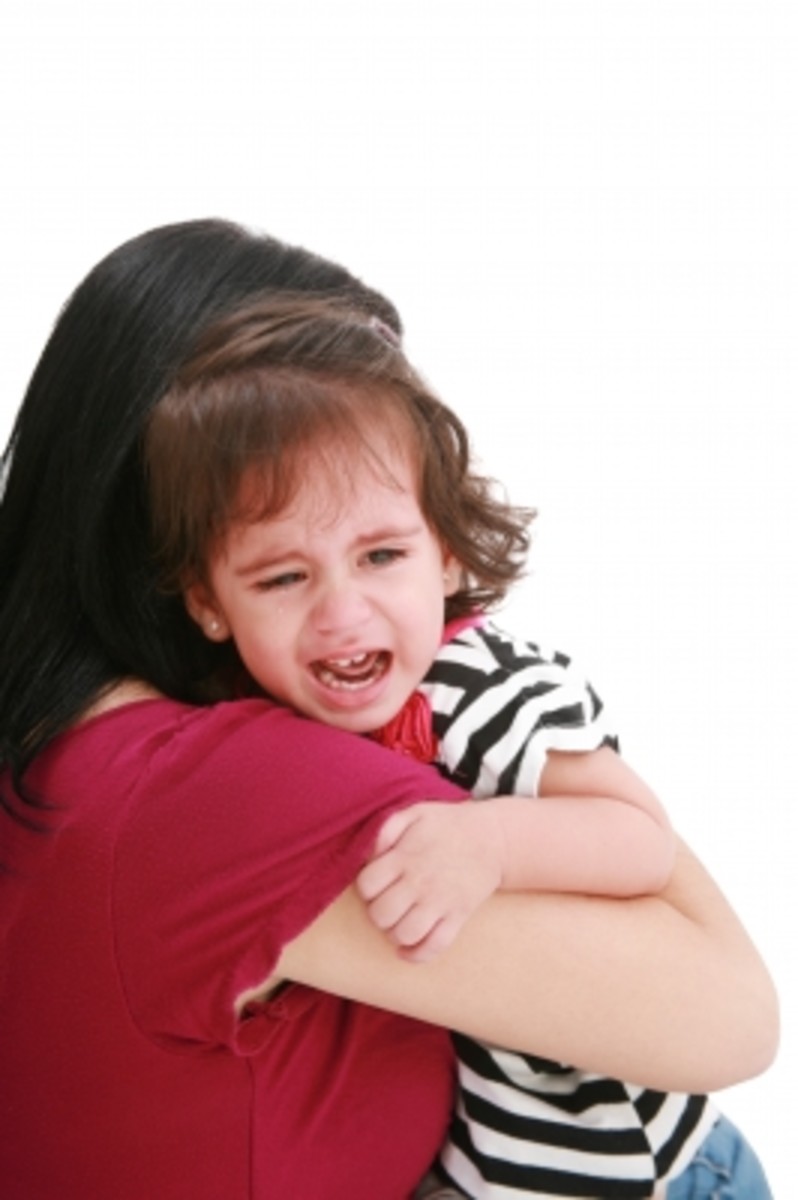Spanking: Useful or Barbaric?

“Mindfulness: Not hitting someone in the mouth.” Eleven-Year-Old quoted by Sharon Salzbert
A fundamental goal of parenting is to raise children who become healthy,happy, and successful members of society. In today’s age corporal punishment has become a topic of taboo, because of the devastating long lasting effects of physical abuse. Spanking as a form of punishment has been linked to several psychological issues such as hyper-aggression, anti-social behavior, depression, low rates of personal achievement, and an increased likelihood of criminal activity in adulthood1; But to those of us who were raised by a philosophy of tough love,what do these riveting statistics mean? Is spanking physical abuse?
“Children need love, especially when they do not deserve it.” – Harold Hulbert
True discipline comes from guidance, patience, and love. Therefore, the ideal way to handle undesirable behavior would not be corporal punishment 7; although, according to some experts, mild corporal punishment can be safely used as a child control strategy to keep children safe and to command their attention 5. While corporal punishment can help to eliminate a behavior, it does not inherently teach a lesson or instill a moral value, and it cannot encourage independent growth or self-discipline; it is merely a factitious consequence to an undesired behavior. A modern cultural view held by both parents and experts speculate that because the line between enforcing reasonable corporal punishment and child abuse is so murky that it should be completely eliminated from the parenting toolbox and made illegal 6.


Corporal Punishment and Behavior
One theory of parenting states that caregivers teach children how to manage their emotions by learning to understand them. The hypothesis suggests that when a child comprehends negative emotion, such as anger, the child becomes less likely to behave violently. Anger is a biological reaction that stimulates the fight or flight instinct; scientific observation indicates that people are born to react to fight- or-flight, rather than respond to it. Those who conduct their lives by this philosophy generally consider corporal punishment of any kind as a threat to a developing child’s emotional intelligence. The risks included are: damaging the bond between caregiver and child, modeling aggressive behavior, and teaching children that strong emotion is bad and/or scary. 4
Research confirms that excessive physical force is associated with an abundance of ill desired personality defects,3 and studies have demonstrated that aggressive behavior in children declines when parents who formerly employ spanking as a regular means of punishment adopt a non-violent approach to disciplining their children 1. While surveys show that high-intensity corporal punishment leads to aggressive behavior and bullying in children, studies performed in 1969 state that there are no reported psychological differences between toddlers whose mothers had occasionally use corporal punishment and those who didn't use any.5
Do you believe that corporal punishment is safe?
A Matter of Human Rights
“Where after all, do human rights begin? In small places, close to home – so close and so small that they cannot be seen on any maps of the world. Yet they are the world of the individual person; the neighborhood he lives in; the school or college he attends; the factory, farm or office where he works. Such are the places where every man, woman and child seeks equal justice, equal opportunity, equal dignity without discrimination. Unless these rights have meaning there, they have little meaning anywhere. Without concerted citizen action to uphold them close to home, we shall look in vain for progress in the larger world.” - Eleanor Roosevelt
On October 5, 2009, Sweden was celebrated for 30 years of non-violence in the home, and was recognized as the first country to honor the civil rights of children through banning corporal punishment. An elated Goran Hagglund, Sweden’s social affairs minister, reported success for the no-hit policy, while critics of the policy suggest that non-violent parenting was responsible for increased crime rates and parents who are fearful of their children 8. According to the National Criminal Justice Reference Service, between the years of 1981 and 1991 Swedish police records have shown a rise in assaults, burglary, and vehicle theft 2.
Inconclusive Research
The subject of whether or not violence and criminal activity are directly influenced by the use of corporal punishment throughout childhood is a matter of deep controversy. Observations have been made, studies have been conducted, and behavioral modifications have all been attempted to answer the question of what causes people, both young and old, to harm one another. The answers have yet to be clearly defined because research has been provided for both sides of the spectrum, without a sufficient amount of scientific evidence to support either claims 1. Overall, research indicates that mild corporal punishment when combined with a loving and supportive environment does not seem to cause any long term permanent psychological problems within the general population 5. Still, there are many different and effective styles of non-violent parenting. All forms of discipline require that a caregiver be aware of the consequences of their choices, and the autonomy of the human spirit.
Works Cited
1. Bennett, H. (1997). A good spanking or a bad habit? Why parents struggle with punishment. Today's Parent 14.5, 42.
2. Farrington, D., Langan, P. A., & Wikstrom, P.-O. H. (1994). Changes in Crime and Punishment in America, England and Sweden Between the 1980s and the 1990s. Studies on Crime and Crime Prevention Volume:3 Dated:(1994) Pages:104-131.
3. Larzelere, R. E. (2010, February 22). Do nonphysical punishments reduce antisocial behavior more than spanking? A comparison using the strongest previous causal evidence against spanking. Stillwater, OK 74078, USA: BioMed Central Ltd.
4. Markham, L. D. (2012). Creator of AhaParenting.com. New York, USA: Penguin Group (USA) Inc.
5. Rankin, J. L. (2005). Parenting Experts: Their Advice, The Research, And Getting It Right. Praeger Publishers .
6. Sayre, C. (2007, January 24). TIME. Retrieved from TIME website: http://content.time.com/time/nation/article/0,8599,1581853,00.html
7. Schafer, A. (2009). Honey, I Wrecked the Kids: When Yelling, Screaming, Threats, Bribes, Timeouts, Sticker Charts and Removing Privileges All Don't Work. John Wiley & Sons .
8. Sullivan, T. (2009, October 5). csmonitor: In 30 years without spanking, are Swedish children better behaved? Retrieved from csmonitor website: http://www.csmonitor.com/World/Europe/2009/1005/p06s10-woeu.html








